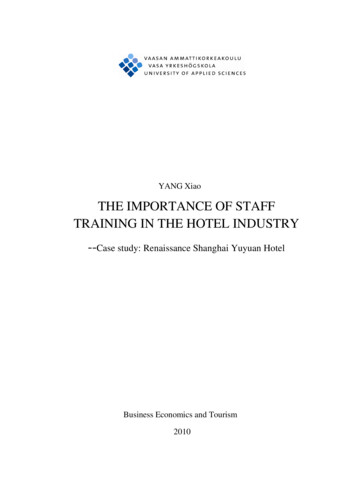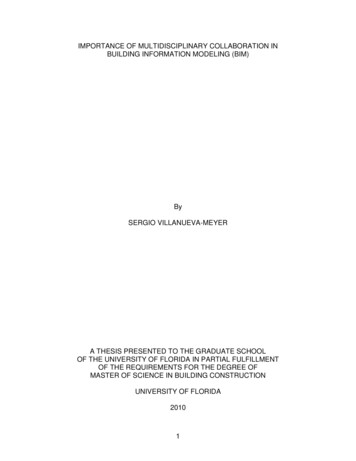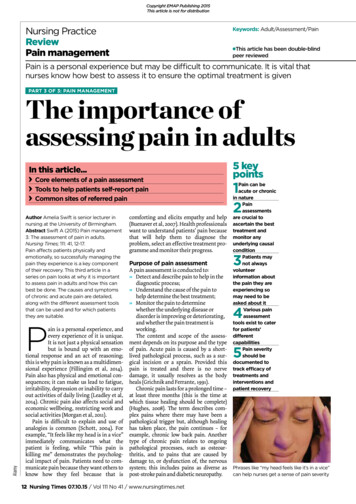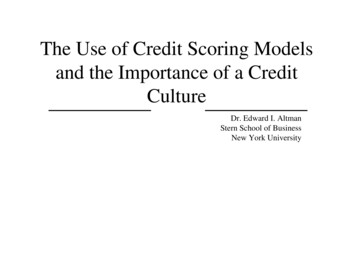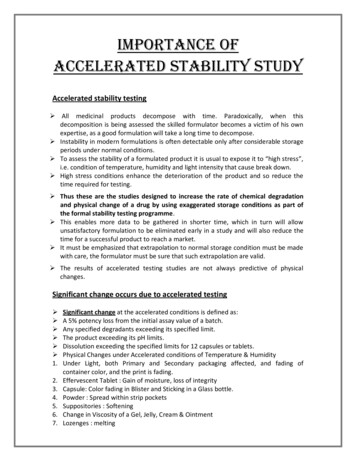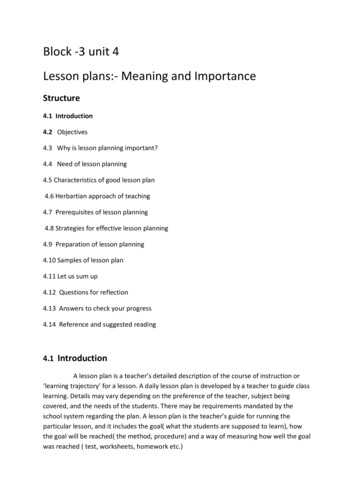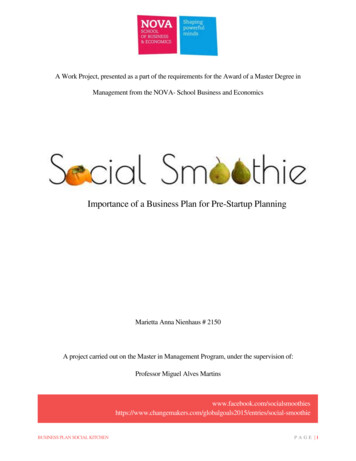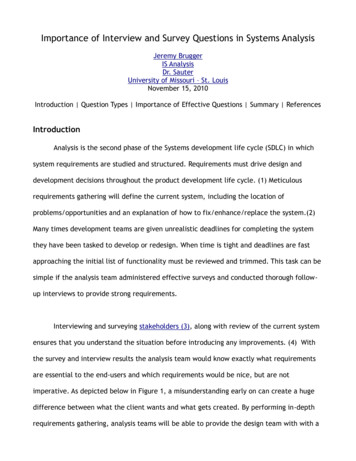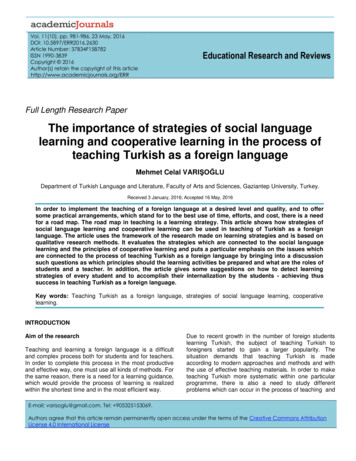
Transcription
Vol. 11(10), pp. 981-986, 23 May, 2016DOI: 10.5897/ERR2016.2630Article Number: 37B34F158782ISSN 1990-3839Copyright 2016Author(s) retain the copyright of this nal Research and ReviewsFull Length Research PaperThe importance of strategies of social languagelearning and cooperative learning in the process ofteaching Turkish as a foreign languageMehmet Celal VARIŞOĞLUDepartment of Turkish Language and Literature, Faculty of Arts and Sciences, Gaziantep University, Turkey.Received 3 January, 2016; Accepted 16 May, 2016In order to implement the teaching of a foreign language at a desired level and quality, and to offersome practical arrangements, which stand for to the best use of time, efforts, and cost, there is a needfor a road map. The road map in teaching is a learning strategy. This article shows how strategies ofsocial language learning and cooperative learning can be used in teaching of Turkish as a foreignlanguage. The article uses the framework of the research made on learning strategies and is based onqualitative research methods. It evaluates the strategies which are connected to the social languagelearning and the principles of cooperative learning and puts a particular emphasis on the issues whichare connected to the process of teaching Turkish as a foreign language by bringing into a discussionsuch questions as which principles should the learning activities be prepared and what are the roles ofstudents and a teacher. In addition, the article gives some suggestions on how to detect learningstrategies of every student and to accomplish their internalization by the students - achieving thussuccess in teaching Turkish as a foreign language.Key words: Teaching Turkish as a foreign language, strategies of social language learning, cooperativelearning.INTRODUCTIONAim of the researchTeaching and learning a foreign language is a difficultand complex process both for students and for teachers.In order to complete this process in the most productiveand effective way, one must use all kinds of methods. Forthe same reason, there is a need for a learning guidance,which would provide the process of learning is realizedwithin the shortest time and in the most efficient way.Due to recent growth in the number of foreign studentslearning Turkish, the subject of teaching Turkish toforeigners started to gain a larger popularity. Thesituation demands that teaching Turkish is madeaccording to modern approaches and methods and withthe use of effective teaching materials. In order to maketeaching Turkish more systematic within one particularprogramme, there is also a need to study differentproblems which can occur in the process of teaching andE-mail: varisoglu@gmail.com. Tel: 905325153069.Authors agree that this article remain permanently open access under the terms of the Creative Commons AttributionLicense 4.0 International License
982Educ. Res. Rev.as well as to suggest some solutions. The problemsoriginate from educational environments, from teachers,and students. Therefore, it is important to divide theproblems into the dimensions of teaching and learning,afterwards to split them into smaller topics and to offerproper solutions. Consequently, there is a need forresearch, which will focus on the student experience, bytaking into the light how the students learn the material inthe easiest way and by bringing into the study the use oflearning strategies.In this respect, this article will shed some light on suchissues as how the strategies of social language learningand cooperative learning influence the process oflanguage learning and how it is possible to benefit fromthem in teaching of Turkish as a foreign language.a foreign language, will help him/her during his/her futurestudies.What is a language learning strategy?1. Direct strategies:(a) Memory strategies(b) Cognitive strategies(c) Compensation strategiesIn a general way, the term „strategy‟ can be defined as aroad, which is followed in order to reach a certain aim. “Itcomprises also such connotations as making a decision,overcoming obstacles, setting proper conditions, tryingthe most suitable ways, and showing similar manners inevery condition/situation” (Saydı, 2007:7). A strategy“expresses an establishment of a long-term goal andgeneral aims of an action, a start of the action, and thechoice and use of proper sources which will bring to theaim” (Köksal and Varışoğlu, 2012:82). When a foreignlanguage is concerned, a language learning strategy canbe defined as a set of techniques which are used by thestudents to bring his/her to the aim of his/her learningfaster, and to give the process of learning a moreenjoyable and enthusiastic character.The strategies of language learning can be also definedas “conscious actions made by the student in order toacquire knowledge, memorize, remember the memorizedinformation, and use this information as well as certainactivities, actions, and techniques which are used by thestudent to develop his/her skills in the learning of aforeign language” (Oxford, 1996; Oxford et al., 2004)The most important known characteristic of the learningstrategies is the fact that it influences the process oflearning directly and can be taught (Oxford et al., 2008).The other feature is that it is connected to individualdifferences of the students; therefore, every student hashis/her own learning strategy.The learning strategies provide planning and evaluationof the studies, control over the studied material, makingdecisions connected with the learning process andidentification of the issues in which occur difficulties(Chamot, 2004). With the use of the learning strategies,the student learns how to organize himself/herself, how toremember the material and how to think (Özkal andÇetingöz, 2006). In addition, it is quite frequent that thestrategies used by the student consciously while learningThe classification of the strategies of languagelearningThe language learning strategies, “which started to befirst studied in the 1970s in the frames of the research ofthe characteristics of those who success in languagelearning” (Cesur and Fer, 2007), were classifieddifferently by researchers (O‟Malley et al., 1985;Weinstein and Mayer, 1986; Rubin, 1987; Gagné andDriscoll, 1988; Chamot and Kupper, 1989; Oxford, 1990;Öztürk, 1995). The classification made by Oxford isshown in the following:2. Indirect strategies:(a) Metacognitive strategies(b) Affective strategies(c) Social strategiesThis paper will explain how the social strategies whichbelong to the classification made by Oxford (1990) canbe employed in teaching of Turkish as a foreignlanguage.METHODSIn this study, qualitative research method has been used. Accordingto Yıldırım and Şimşek (2006) this method is a research typethrough which the receptions and the events are manifested in arealistic and total manner in their natural environment. In this study,the instructions acquired by means of the analyses of documentsand observations have been reported. For this reason, the researchprocess of the research is appropriate to the qualitative NG AND THE PRINCIPLES OF THEIR USE INTEACHINGOne of the most important functions of the strategies ofsocial language learning in the teaching of a foreignlanguage is to encourage the students to establishcommunication with people who speak the targetlanguage. Among the functions of the social strategiesthere are such as asking questions in a foreign language,receiving answers, correcting mistakes, establishingcooperation, trying to study feelings and thoughts ofpeople of the targeted culture (Lan and Oxford, 2003).
VarisogluIn order to make communication in a foreign languageeffective, there is a need to develop the oralcommunication skills. The biggest contribution of thesocial strategies into the language learning process is theemphasis on the importance of social environment andoral communication.The learning and teaching environment is a socialenvironment. In this environment, the teacher plays avery big role to establish communication among thestudents. The students‟ perception of their self-esteemplays an important role in the process of achievingsuccess in language teaching as well as in the students‟adaptation with the language which they learn. Besides, itis possible to develop the skills of cooperation betweenthe students. The students can learn in the easier waywhen they share their knowledge with a teacher andother students.Some of the social strategies which can be used tolearn a foreign language are the following (Saydı,2007:52):1. Reaching clarity: Explanation and giving a definition ofinformation that is not understood or not completelyunderstood in the process of language learning.2. Confirmation of knowledge: Correction, giving adefinition - with the help of different sources - ofsituations, in which the students are not sure and makemistakes.3. Establishing cooperation: Making cooperation in orderto bring the targeted language into the part of thestudents‟ life during the process of language learning; thecooperation is established with people who have enoughknowledge and skills in the target language.4. Cultural sensitivity: The attempts of the students tolearn in the process of language learning the feelings andthoughts of their friends who belong to different cultures.COOPERATIVE LEARNING AND THE PRINCIPLES OFTEACHINGLearning is a both individual and social process. For thisreason, it has been expressed that there is a growth insocial skills of those students who work in cooperation(Dollman et al., 2007:44). In a classroom, in which aforeign language is taught, the use of cooperativelearning makes dialogues among the students moreefficient.In teaching, the general aim of cooperative learning isthe establishment of social relationships among thestudents and with the teachers. With the help of theserelationships, the responsibility for learning is left to thestudents themselves and the students is encouraged tomanage in the learning environment which is based ontheir communication. (Varışoğlu, 2013:36). Because ofthis, cooperative learning has a great importance in such983language learning processes as the application of ateam-work, discussion groups, activities of asking andanswering questions, problem solving, as well as in thedevelopment of social and cognitive skills of the students.The process of cooperative learning is a process ofgroup learning. The groups are composed with the aim ofthe establishment of partner learning, which provides thatall the students benefit from successful learning. Themembers of the group encourage each other tounderstand the subject of learning and to learn it more.Therefore, all group members gain more success bylearning from each other than they could learn by havingan individual work (Slavin, 1999).Johnson et al. (2000) state that the cooperativelearning is needed for intellectual, social, on is compulsory. During cooperative languagelearning, each student in the group has to work togetherwith other students in his or her group as well as with thestudents in the other groups. Throughout the teamworkpractice, the students gain new standpoints and developthe communication skills and friendly relations (Panitz,2006).In the process of foreign language learning,cooperative learning develops social connections andincreases motivation among the students. Socialconnections belong to a process of the establishing ofpositive bonds between the members of the group. Thisbond brings the increase of conformity within the classand encourages the students for participation. Accordingto Saban (2004:28), the lack of social connections amongthe members of the group lays the grounds for thestudents‟ independent work and the lack of anyinteraction among them.Cooperation plays an important role in the developmentof communication in a foreign language, as well as in theincrease of the richness of meanings. Language learningactivities which are based on cooperation and sociallearning theories guarantee that a contribution is made inthe development of the students‟ language vocabulary.Activities of cooperative learning reflect richness of thelanguage used by both the teachers and the students.Such activities increase the variety of words used whilespeaking a foreign language, making thus the study ofthe functions of the language more efficient. Along withthe contribution that the student makes into thedevelopment of his language skills via his/her individualefforts, he/she contributes also into the inter-classcommunication. As it is put forward by Slavin (1988),cooperative learning provides the contribution into theconcepts of successful language learning.Language learning environment which is based on thecooperative learning influences the students to becomemore open to the outside world develops their abilities oflistening and activates the skills of understanding ofothers. At the same time, cooperation is the principle
984Educ. Res. Rev.foundation of a social motivation (Johnson and Johnson,1999). A student following the strategy based oncooperative learning is aware of the development ofhis/her learning and of the learning of the members ofhis/her team. As a result, we see that the teacher stepsout of the role of the only person who transfersknowledge during the process of learning.The social environment which becomes establishedalongside with the cooperative learning helps to transferthe language into different aspects and spheres (Jacobs,2006). The learning activities do not belong only to theclassroom; they become to be spread into differentspheres of social life. Therefore, the student has anopportunity to transfer his/her experiences into a real lifeand the living language.THE IMPORTANCE OF THE APPLICATION OF THESTRATEGIES OF SOCIAL LANGUAGE LEARNINGANDCOOPERATIVELEARNINGINTOTHETEACHING OF TURK
learning and cooperative learning in the process of teaching Turkish as a foreign language Mehmet Celal VARIŞOĞLU Department of Turkish Language and Literature, Faculty of Arts and Sciences, Gaziantep University, Turkey. Received 3 January, 2016; Accepted 16 May, 2016 In order to implement the teaching of a foreign language at a desired level and quality, and to offer some practical .


